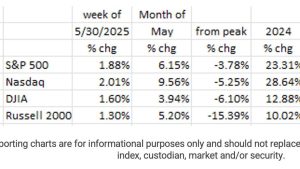Wordle, the immensely popular word-guessing game, continues to captivate players worldwide with its deceptively simple format. Even Josh Wardle, the game’s creator, admits to finding the daily puzzle a challenge, highlighting the game’s enduring appeal. Wardle developed the game during the COVID-19 lockdowns, initially for personal enjoyment with his partner. Its subsequent public release in October 2021 sparked an unprecedented surge in popularity, culminating in its acquisition by The New York Times for a seven-figure sum. Wordle’s success can be attributed to its accessible gameplay, requiring players to deduce a five-letter word within six attempts, using color-coded feedback to refine their guesses. This blend of luck and strategy has cemented Wordle’s position as a daily ritual for countless players, fostering a sense of shared challenge and achievement.
The mechanics of Wordle are straightforward yet engaging. Players submit a five-letter word, and the game provides feedback on each letter’s placement within the target word. Gray tiles indicate letters not present in the word, yellow tiles signify correct letters in the wrong position, and green tiles confirm correct letters in the correct position. This iterative process of deduction allows players to strategically narrow down the possibilities, leveraging their vocabulary and pattern recognition skills. The limited number of attempts adds a layer of pressure, encouraging players to carefully consider their choices and maximize the information gained from each guess.
Experts in linguistics, like Erhan Aslan from the University of Reading, offer valuable insights into effective Wordle strategies. Aslan emphasizes the importance of the starting word, recommending words containing commonly used vowels and consonants. Avoiding less frequent letters like Q, Z, J, and X early on allows players to gather more information about the target word’s structure. This initial feedback then informs subsequent guesses, enabling players to employ phonics and word knowledge to eliminate possibilities and hone in on the solution. Aslan’s advice underscores the strategic element of Wordle, transforming a seemingly simple word game into a stimulating mental exercise.
For those seeking assistance with the daily Wordle challenge, hints and clues are often available. In the case of Wordle #1,308, five hints progressively reveal information about the target word. The first hint discloses the presence of two vowels, while the second reveals the initial letter “P.” Subsequent hints confirm the absence of repeated letters, categorize the word as a noun, adjective, and verb, and finally describe it as pertaining to spoken or written language. These clues offer a structured approach to solving the puzzle, encouraging players to synthesize the information and arrive at the correct answer.
The solution to Wordle #1,308 is “Prose,” a word that perfectly encapsulates the clues provided. As a noun, adjective, and verb, “prose” refers to ordinary language, aligning with the final hint. The word contains two vowels and begins with “P,” satisfying the earlier clues. The absence of repeated letters further reinforces the accuracy of the solution. This example demonstrates how carefully crafted clues can guide players towards the correct word without explicitly revealing the answer, preserving the sense of accomplishment derived from solving the puzzle.
Wordle’s daily refresh cycle contributes to its sustained popularity, providing a fresh challenge each day. The midnight reset ensures that players have a new puzzle to anticipate and conquer, fostering a sense of routine and engagement. While waiting for the next Wordle, players can explore other word-based puzzles like Typochondria and Spellspire, further indulging their passion for wordplay and mental stimulation. Wordle’s success lies not only in its elegantly simple design but also in its ability to foster a sense of community, challenge, and daily achievement, captivating players of all skill levels.










